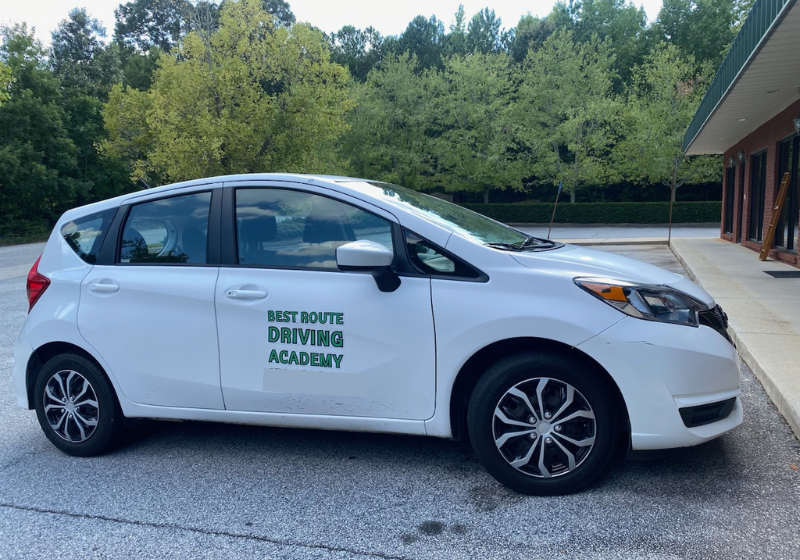
How to drive? First Know the car
Tuesday, January 28, 2025
How do you get to know a car? Learning to drive is a big deal. HUGE. It's not just about hopping into the driver's seat, blasting your favorite song, and rolling down the road. Nope, there's way more to it. Before you even think about hitting the gas, there are a few things you—yes, you—need to do. And lucky for you, I’m here to break it all down as if I am talking to my own kid. With that said, I won’t let you skip the boring-yet-important stuff. SO READ ON...
Step 1: Know Your Pre-Drive Sequence
Let’s start with what’s called the "pre-drive sequence." Sounds fancy, right? But it’s just a checklist you’ll do before starting the car. Think of it like warming up before a big game. Skipping it isn’t an option—unless you want to risk being "that guy" on the road.

Here’s how it goes:
Adjust your seat – Make sure you’re not so far back you’re stretching to reach the pedals, but also not so close that the steering wheel’s all up in your face. Aim for Goldilocks-level perfection—just right.
Check your mirrors – I’m talking all three: rearview and both side mirrors. If you can’t see the cars around you, how are you supposed to know what’s coming? Spoiler alert: You can’t.
Buckle up – This isn’t negotiable. Your seatbelt is your BFF in the car. It’ll save your life if things go sideways. End of discussion.
Start the car and check the dashboard – Once you’ve got the engine running, take a peek at the dashboard lights. Any weird warnings? Low fuel? If something’s blinking, it’s not for decoration. Pay attention.
Put your phone away – Seriously, your TikToks and texts can wait. Distracted driving is a no-go, so stash the phone where you won’t be tempted.
Step 2: Meet the Car
Now that you’re settled in, let’s talk about getting to know the car itself. Before you can drive it, you’ve got to understand what’s what. Here are the MVPs of the car you need to be familiar with:
- Steering wheel: Duh, right? But did you know the 10-and-2 hand position your parents learned is outdated? Now it’s more like 9-and-3. Trust me, it’s all about better control and safety.
- Gas pedal and brake: These are your go and stop buttons. Easy peasy. Just remember—brake on the left, gas on the right. Get them mixed up, and you’ll have a problem.
- Turn signals: You’ll use these little sticks more than you think. They’re your way of saying, “Hey, world, I’m turning!” Don’t be the person who skips this step. Nobody likes a surprise lane-changer.
- Windshield wipers: Trust me, you’ll want to know how these work before you’re in a surprise rainstorm. Locate the lever and figure out the settings now, not mid-downpour.
- Hazard lights: These bad boys are for emergencies. Like, if you’re on the side of the road and need other drivers to know you’re there.
- Emergency brake (or parking brake): This isn’t just for parking on hills. It’s also a backup if your regular brakes decide to take a day off. Know where it is and how to use it.
Step 3: Understand Safety Features
Alright, here’s where Mom Mode kicks in because, honey, this part is important. Modern cars are loaded with safety features, but you need to know what they are and how they work. Here’s a quick rundown:
- Seatbelts: I know I already mentioned this, but it’s worth repeating. A seatbelt’s job is to keep you in place if you get into an accident. Without it, you’re like a soda can in a tornado—flying around and crashing into things. Not cute.
- Airbags: These are like little cushions that pop out to protect you during a crash. But heads up: They work best when you’re wearing your seatbelt.
- Blind-spot monitors: If your car has these, they’re lifesavers. They’ll alert you when a car’s hanging out where you can’t see it. Still, don’t rely on them entirely—always check your mirrors.
- Anti-lock braking system (ABS): This keeps your brakes from locking up during a sudden stop. Translation? You’ll have better control in an emergency.
- Backup camera: If your car has one of these, it’s a game-changer. But don’t forget to still check over your shoulder—technology isn’t perfect.
Step 4: Do a Walkaround
Before you hit the road, take a lap around the car. I know, it sounds like overkill, but trust me, it’s worth it. Check for flat tires, make sure the headlights and brake lights work, and look for anything unusual. Better safe than sorry, right?
Step 5: Mentally Prepare
Driving isn’t just a physical skill—it’s a mental game too. Before you start, make sure you’re calm, focused, and ready to pay attention. If you’re feeling distracted, stressed, or tired, save the driving for another time. The road isn’t going anywhere.
Final Thoughts
Learning to drive is exciting, but it’s also a responsibility. You’re not just keeping yourself safe; you’re looking out for everyone else on the road too. So take the time to prepare, learn the ropes, and respect the process. It’s not about being perfect—it’s about being safe, smart, and ready to roll. Now, go impress your driving instructor (and me) with all the prep work you’ve done.
You’ve got this!
